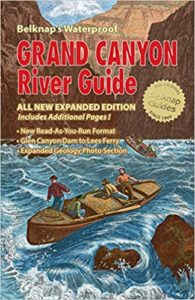Is Rafting the Grand Canyon Hard?
There are many different factors to determine if a rafting trip will be hard or not. Various factors make rafting the Grand Canyon hard such as river hazards, cost, rapids, time, and getting a spot on a trip. But there are also a lot ways to mitigate these factors. The first one is having the right information about the Grand Canyon.
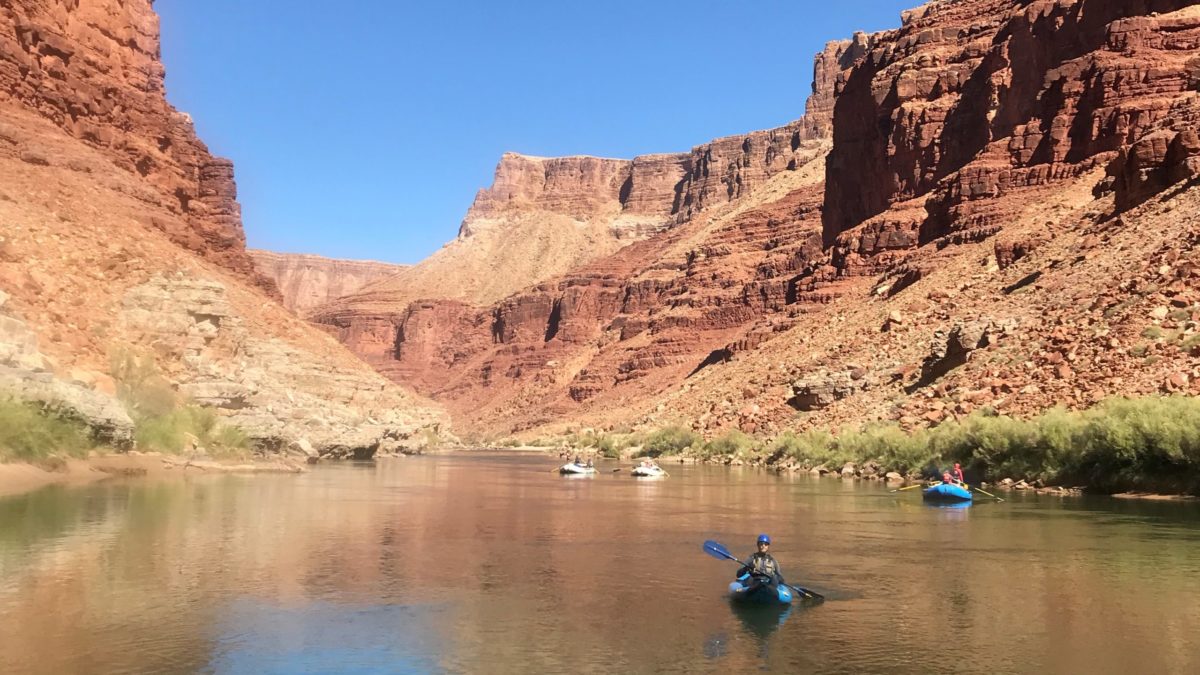
Inflatable kayaker paddling the flat water.
Is rafting the Grand Canyon dangerous?
Rafting the Grand Canyon is not any more dangerous than other rafting trips. In fact, because it is regulated by the National Park Service (NPS) there are extra measures in place to ensure your safety. However, the common hazards of any river trip still apply. Here are the main dangers along with how to avoid and prevent them.
- High volume river - big waves, flush drowning
- Cold water (52 degrees F) - shock, heart attack, hypothermia
- Remoteness - no roads in or out, up to over a mile deep, and up to 225 miles long
- Environment - dehydration, heat stroke, hypothermia, flash flooding, canyon walls
- Not knowing the river - big rapids, missing camp, missing mileage
Everyone on the trip should know how to swim in whitewater and be wearing high flotation PFD's. Set safety while running big rapids to lessen the amount of swimming time if there are swimmers.
In the summer months, especially, the difference in air temperature and water temperature will take your breath away. It is important to be prepared to go for a swim during the big rapids, even in the heat. For example, consider putting on a wetsuit before big rapids.
The NPS requires rafters to carry a satellite phone so you have contact with the outside world. They also ensure helicopter rescues if you take the appropriate steps to create a landing zone.
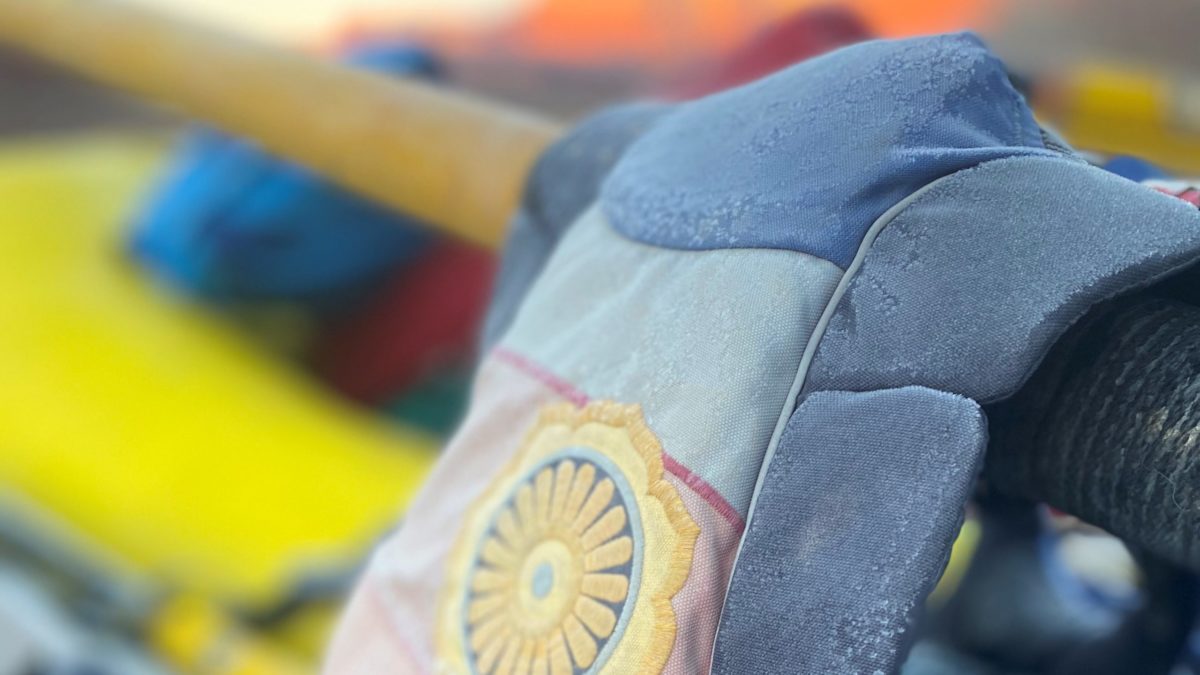
Frozen PFD during a February Grand Canyon trip.
Photo by Liz Miheve
Be dressed appropriately for the weather, sun protection in the summer and drysuits or wetsuits for the winter. Always, but especially when it is over 100 degrees, be sure to stay hydrated with enough electrolytes. During monsoon season, be aware of storms and take extra caution when exploring side hikes. Try to avoid setting up your tent under crumbly walls.
Keep track of where you are on the river using a river map or GPS. I like this guidebook because it is waterproof and has a topo map. Scout any rapids any of the rowers feel uncomfortable with. Have a mileage and camp plan with back up camps so you can avoid extra long days.
How much does a Grand Canyon trip cost?
The cost of your Grand Canyon trip will vary greatly depending on how long you go for, if you go on a commercial or a private trip, and how glamorous you want your experience to be. With commercial trips, you have the option of rafting for 3-18 days in motor rafts, oar boats and paddle boats. On a private trip, the trips are usually 16-24 days and done in oar boats.
On a commercial trip, you are paying for a luxury experience where the guides do the majority of the work including rowing the rafts, setting up camp, cooking meals, and taking down and setting up the toilet.
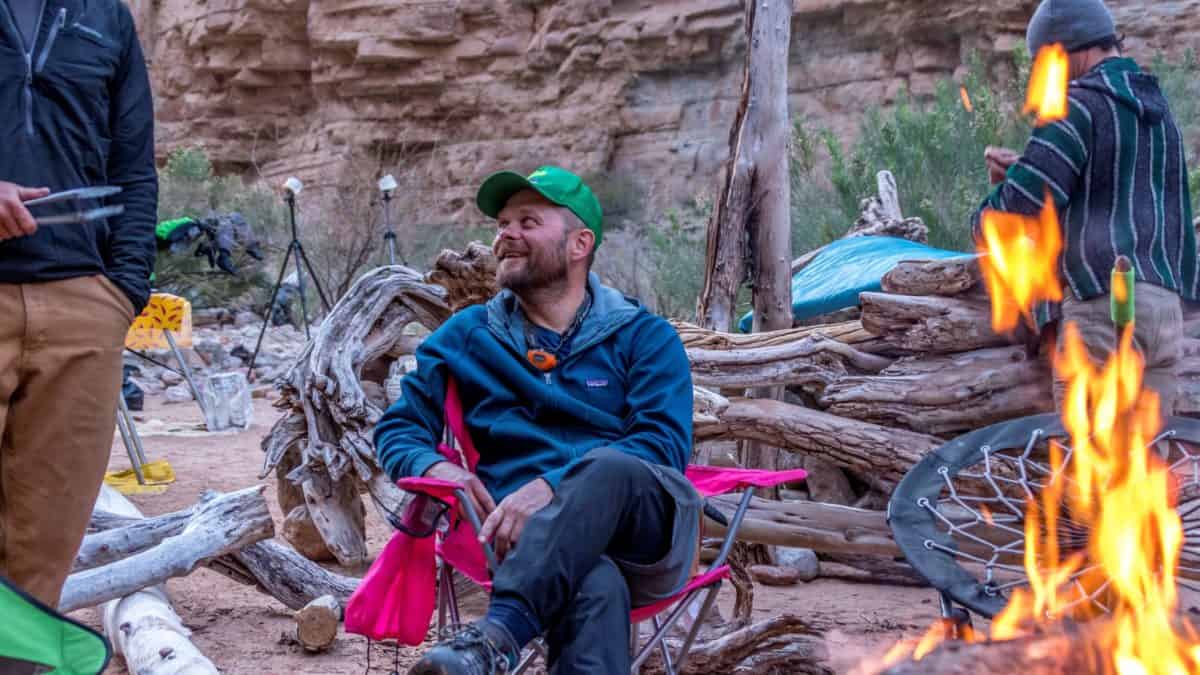
Camping on the Grand Canyon
These are the average prices I found for different length trips:
- 3-5 days - between $1400-$2000
- 6-9 days - between $2500-$3500
- 10-14 days - between $3500-$5500
- 15-18 days - between $4500-$5800
Private rafting trips are cheaper because you are doing all the work. Generally, trips rotate between cook crews, water boys and girls, toilet duty, and other tasks to spread the jobs out. A lot of people will rent boats and other multi-day gear from an outfitter. The outfitters will also plan meals, pack food, dispose of all your waste, and provide shuttle between the river and their warehouse. They usually let you store vehicles at their base as well. These trips will start around $1000 but expect your final price to be higher due to additional expenses.
Additional expenses for any trip:
- Food menus - You have options between backpacker style basic and gourmet menus.
- Alcohol - The outfitters do not provide booze.
- Take out - Diamond Creek is an additional $64.25 per person and vehicle and Pierce Ferry is free but an additional 45 miles or two to three days of renting the gear.
- Personal gear rentals - Any sleeping gear, chairs, satellite phones, etc are generally not covered in the group price.
- Travel to Flagstaff - Do not for get about the cost of transportation to Flagstaff as well as a place to stay for the a night before and after the trip.
In total, my private trips have ranged between $1300-$1800. These were 22 day trips so in total my travel time was around one month. For the experience of being in the big ditch, it is totally worth it.
What is the Grand Canyon rapids rating system?
You might have heard of the famous class 8 and 9 rapids on the Grand Canyon and been very scared and confused because other rivers only have rapids that go until class 5, class 6 being unrunnable. This is because there is a unique 1-10 rating system for the rapids in the Grand Canyon.
It does not mean that the rapids are twice as hard as any other river, it just allows the variety of big wave train rapids to be described in more detail.

Scouting Crystal Rapid, Class 9
One of the first guidebooks written by Buzz Belknap described the rapids with a 1-10 rating scale and the trend has continued since. The number rating for these rapids can be easily compared to a 1-5 rating system by simply cutting the rating in half.
What is the hardest rapid on the Grand Canyon?
Lava Falls is notorious for being the hardest rapid on the Grand Canyon, a class 9/10. It is river mile 179.2, one of the last big rapids. Luckily, it is possible to scout Lava Falls on either shore, depending on where you want to run the rapid and the flows.
The rapid is intimidating because the scout is high above the river, making the features look smaller than they are when you are rowing through them.

Rafting Lava Falls
One tricky feature is the enormous ledge hole in the center of the river at the beginning of the rapid. Rafters must choose to go right or left of the hole first, and then make their way down the rest of the giant crashing waves, laterals, and rocks. The left line forces rafts to come perilously close to the ledge hole before teeing up to the rest of the V waves below. The more common right line also skirts the ledge hole only to push towards the cheese grater rock at the bottom.
But it's best not to think about how hard Lava is. It is better to approach it as any other rapid and choose an appropriate line, set safety, pray to the river gods, and enjoy the ride.
Regardless of where you choose to run Lava, you will most definitely be celebrating (if you have a clean line or not) at tequila beach.
How long is the wait to raft the Grand Canyon?
Commercial outfitters advise rafters to sign up 18 months in advance for a trip down the Grand Canyon. This will vary from outfitter to outfitter but to ensure the dates you want, you will have to sign up early.
Rafting the Grand Canyon privately requires a permit. The NPS has a weighted lottery system for permits that anyone can sign up for in February. You make an account through the NPS website, apply in February for up to five different dates any time of the year, and wait until the end of the month for results. The odds are not in your favor, but trips in the winter time are more likely to win because less people want to go rafting in their drysuits. Note that you must pay a nonrefundable $400 deposit within five days of receiving your winning ticket. For more information read the NPS .
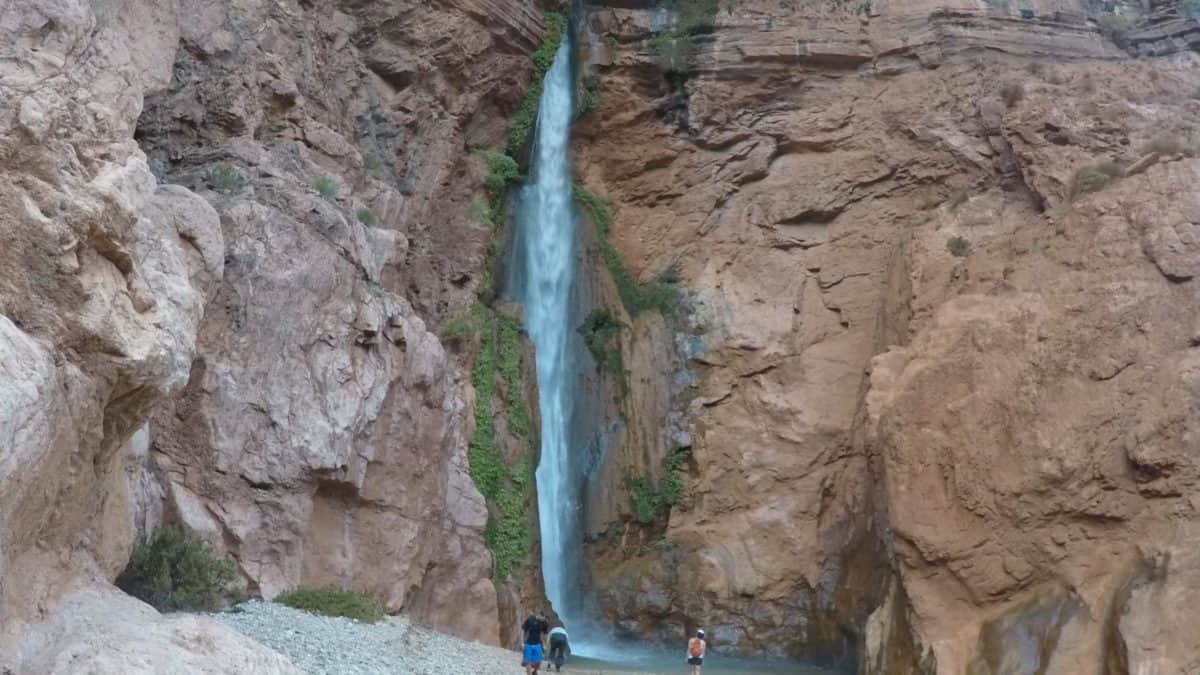
Deer Creek Falls
However, if you know how to row and have a lot of rafting friends, you are more likely to be invited on trips. People who win permits are usually looking for rowers so their non-rowing friends can go. Try and try again because even if you do not win a permit yourself, hopefully someone you know will invite you on a trip eventually.
All things said and done, any river trip has its challenges. Rafting the Grand Canyon is not harder than any other trip if you have all the right information and spend the proper amount of time planning logistics. Being prepared is key to having a once in a life time trip. What do you think is hard about rafting the Grand Canyon, comment below!
